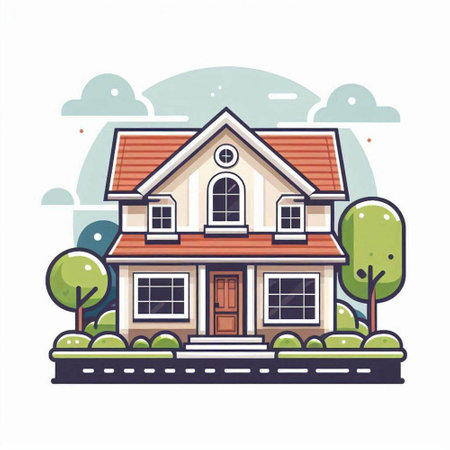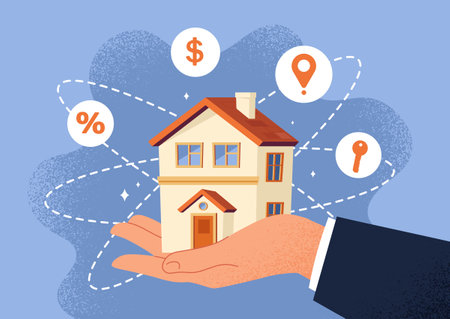1. Understand Your Local Real Estate Market
When it comes to pricing your home for maximum marketing impact, understanding your local real estate market is the first and most important step. The market conditions in your area directly affect how much buyers are willing to pay—and how quickly your home will sell.
Is It a Buyers or Sellers Market?
One of the key things to determine is whether youre in a buyers market or a sellers market:
| Market Type | Description | Impact on Pricing |
|---|---|---|
| Buyers Market | More homes for sale than buyers | You may need to price competitively to attract attention |
| Sellers Market | More buyers than available homes | You can often price higher due to increased demand |
Look at Recent Sales (“Comps”)
Comparable sales, often called “comps,” are recently sold homes in your neighborhood that are similar in size, condition, age, and features. Reviewing comps helps you understand what buyers have actually paid—not just what sellers are asking. A good rule of thumb is to look at homes sold within the last 3–6 months and within a one-mile radius.
What to Compare:
- Square footage
- Number of bedrooms and bathrooms
- Lot size
- Upgrades or renovations
- Year built
- Days on market before selling
Monitor Market Trends
The real estate market shifts constantly. Keep an eye on trends such as average days on market, median sale prices, and inventory levels. These indicators help you stay informed about buyer behavior and pricing expectations.
Example Market Snapshot:
| Metric | This Month | Last Month |
|---|---|---|
| Median Sale Price | $475,000 | $460,000 |
| Average Days on Market | 21 Days | 26 Days |
| Total Active Listings | 320 Homes | 295 Homes |
The more informed you are about your local real estate environment, the better youll be able to position your home for a successful sale. Pricing your home right from the start helps attract serious buyers and can lead to faster offers—often at or above asking price.
2. Get a Professional Home Appraisal
When youre trying to price your home for maximum marketing impact, one of the smartest steps you can take is getting a professional appraisal. A certified appraiser provides an unbiased, expert opinion on your homes value based on location, condition, upgrades, and recent sales in the area. This gives you a solid foundation for setting a competitive and credible asking price.
Why an Appraisal Matters
An accurate appraisal doesn’t just help you—it also helps buyers feel more confident in your asking price. It shows that youve done your homework and aren’t just picking numbers out of thin air. Plus, it can be a powerful tool during negotiations, especially if potential buyers try to lowball you.
Benefits of Getting a Home Appraisal
| Benefit | How It Helps |
|---|---|
| Objective Valuation | Gives you a fair market value based on data, not emotion or guesswork. |
| Buyer Confidence | Helps buyers trust that your home is worth what youre asking. |
| Negotiation Power | Supports your price when responding to offers or counteroffers. |
| Smoother Transactions | Avoid surprises later if the buyer’s lender also requires an appraisal. |
What to Expect During the Appraisal
The appraiser will visit your home and assess its size, layout, condition, features, and upgrades. They’ll compare it to similar properties recently sold nearby (called “comps”) to calculate its current market value. The process typically takes a few hours for the visit and a few days for the final report.
Pro Tip:
If youve made any upgrades—like a remodeled kitchen or new roof—be sure to let the appraiser know. These improvements can add real value that might not be obvious at first glance.

3. Consider Online Pricing Psychology
When it comes to pricing your home, how the number looks online can make a big difference. Most buyers today start their home search on real estate websites, and these platforms often use price filters that group listings into brackets. Understanding how this works can help you price your home in a way that gets more eyes on it—and possibly more offers.
Use Tiered Pricing Brackets to Your Advantage
Online real estate sites typically offer buyers pre-set price ranges to filter homes, such as “$250,000–$300,000” or “$500,000–$600,000.” If you price your home at $505,000, it may not show up for buyers who set their maximum budget at $500,000—even if they might be willing to stretch a little. By setting your price just under a common bracket cutoff (like $499,900 instead of $505,000), you increase the chances of your listing appearing in more searches.
Common Online Price Brackets
| Price Range | Common Buyer Search Filters |
|---|---|
| $250,000–$299,999 | $250K–$300K |
| $300,000–$349,999 | $300K–$350K |
| $500,000–$549,999 | $500K–$550K |
By aligning your list price with these brackets, your home is more likely to appear in filtered results and reach more potential buyers.
The Power of “9” and “500” Endings
Pricing psychology also plays a role in how appealing a price looks. Ending prices with numbers like “9” or “500” can make a property feel like a better deal. For example:
- $299,900 feels psychologically cheaper than $300,000—even though its only $100 less.
- $349,500 sounds more precise and intentional than $350,000.
This small tweak can make your listing stand out among similarly priced homes and attract more attention from budget-conscious buyers.
Examples of Strategic Price Endings
| Rounded Price | Strategic Price Ending |
|---|---|
| $300,000 | $299,900 |
| $400,000 | $399,500 |
| $450,000 | $449,900 |
These small adjustments don’t change the overall value of your home but can make it feel like a better deal while still keeping you within your desired pricing range.
4. Balance Emotion with Objectivity
One of the biggest challenges in pricing your home is separating your emotional connection from the financial decision. It’s natural to feel that your home is worth more because of the memories you’ve created there, the upgrades you’ve added, or the time and love youve invested. However, buyers dont see those things—they see square footage, location, condition, and comparables.
Why Emotions Can Skew Your Pricing
When you let emotions drive your asking price, you risk setting a number thats out of sync with the current market. This can lead to longer days on market, fewer showings, and ultimately lower offers. Remember: overpricing often leads to underwhelming results.
Common Emotional Traps to Avoid
| Emotional Thought | Objective Reality |
|---|---|
| “I raised my kids here—its priceless.” | Buyers value layout, location, and condition—not personal history. |
| “We spent $50K on renovations.” | Not all upgrades return full value; some may not align with buyer tastes. |
| “My neighbor sold for more two years ago.” | The market changes constantly—use up-to-date comps. |
Let Data Guide Your Price
The best way to protect yourself from emotional pricing is by relying on data. Use recent comparable sales (“comps”) in your neighborhood to determine a realistic range. Look at homes with similar square footage, features, age, and condition. Also consider current inventory levels and how long similar homes are taking to sell.
Key Data Points to Consider:
- Recent sale prices of comparable homes (last 3–6 months)
- Current active listings and their pricing strategies
- Price per square foot in your area
- Days on market for similar properties
By focusing on factual market data instead of sentiment, youll be in a stronger position to attract serious buyers and maximize your homes exposure. The right price creates momentum—and that’s what drives results.
5. Monitor Feedback and Be Ready to Adjust
Once your home is listed, its important to pay close attention to how the market is responding. Pricing your home correctly from the start is crucial, but staying flexible after it hits the market can make all the difference in getting a timely sale at the best possible price.
Watch Showing Activity Closely
If your home is priced right, you should see steady interest within the first two weeks of listing. This includes scheduled showings, online views, and inquiries. A lack of activity may signal that buyers feel the price is too high or that your home isnt standing out among similar listings.
What to Look for:
| Activity | What It Might Mean |
|---|---|
| High online views but few showings | Your photos are attracting attention, but buyers may think the price is too high once they read the details. |
| No online traffic or showings | Your listing may be overpriced or not marketed effectively. |
| Lots of showings but no offers | The price might be slightly above what buyers are willing to pay for what youre offering. |
Listen to Buyer Feedback
Your real estate agent will often collect comments from agents who showed your property. Pay close attention to repeated remarks about pricing, condition, or layout. While some feedback may be subjective, consistent patterns can help guide necessary changes.
Be Ready to Adjust Quickly
The longer a home sits on the market without an offer, the more likely buyers are to assume something’s wrong — even if it’s just the price. To avoid this “stale listing” effect, consider making a price adjustment within the first 10–21 days if youre not seeing strong interest.
When to Consider a Price Reduction:
- No showings within the first 7–10 days
- No offers after 10–15 showings
The Bottom Line
Pricing isn’t a one-and-done process. Staying responsive and open to adjustments can keep your home competitive and appealing in a fast-moving market. With smart monitoring and timely updates, you’ll boost your chances of selling quickly — and for top dollar.


